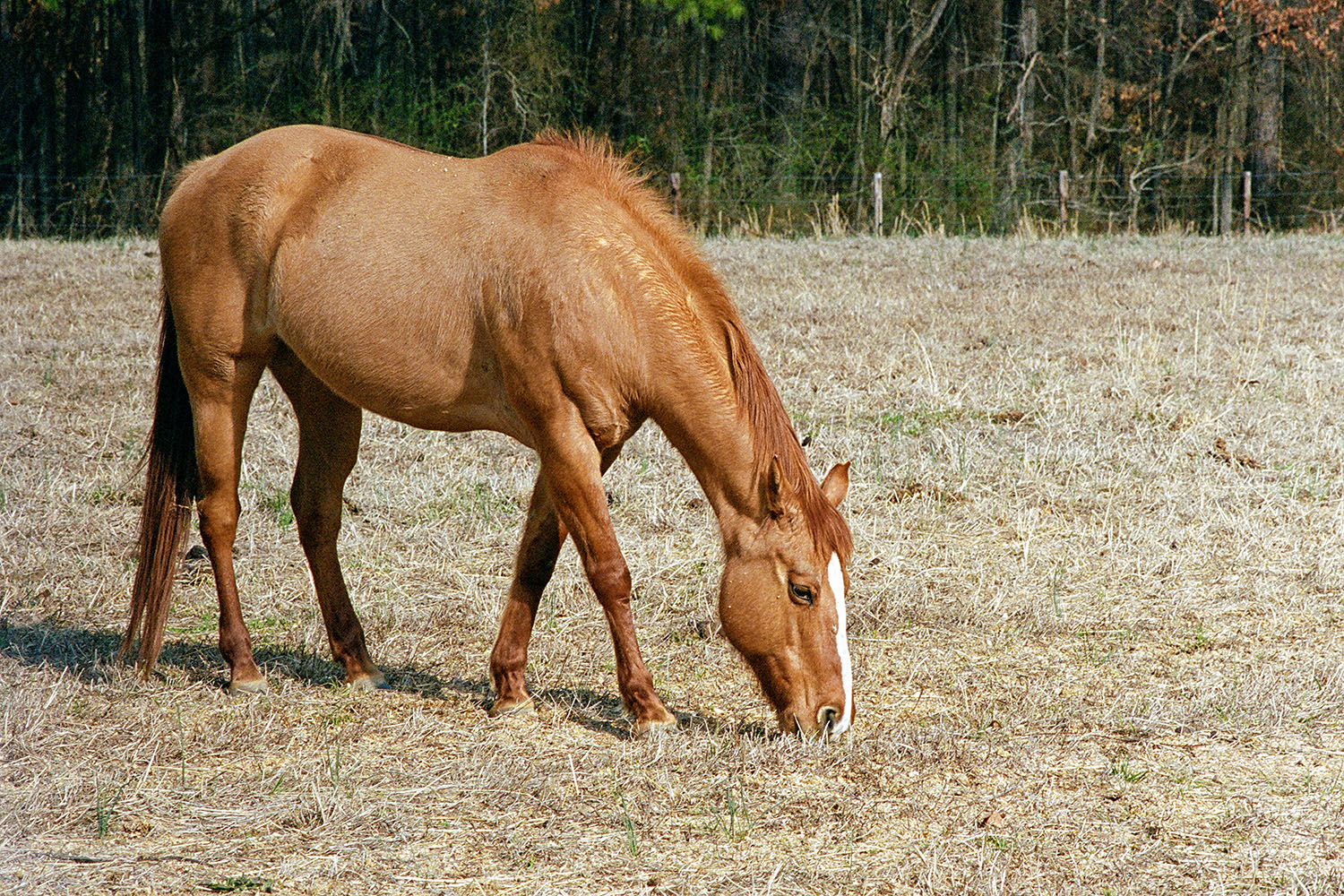
Cette page est également disponible en français
Last September, I published a page on processing the contents of a Kodak Photo CD from 1994. Because I liked the results, I decided to see what it would be like to work with film again. I still have three cameras that take film; I chose to use my Minolta SR-T-303 (called SR-T-102 in the United States), a camera that I got in March of 1974. There were two issues I needed to address: first, this camera had not been used since the 1980s, so I wanted it cleaned and checked inside out. Second, the light meter originally used a 1.35-volt mercury battery that is no longer made, so I wanted to have it recalibrated for use with widely available 1.5-volt button cells. All this was done expertly and at a very reasonable price by Bill at ProCemera in Charlottesville, Virginia.
All I had was the camera and an MD Rokkor-X 50mm ƒ1:1.7 lens as I had gotten rid of my other Minolta equipment a long time ago. At the very least, I needed a couple of additional lenses. On eBay, I found excellent used copies of an MD W-Rokkor-X 28mm ƒ1:2.8 wide-angle and an MD 135mm ƒ1:2.8 telephoto lens. Thus equipped, I had to decide what film to use. I hesitated between Kodak Portra 400 and Kodak Ektar 100. I will no doubt end up using both, but for now, I went with the Portra for its faster speed (and to think I used to shoot Kodachrome 25!)
Click on any image to see a larger (2100 x 1400 pixel) version!

|
Horse on meadow off Stagecoach Road |
135mm, ISO 400, 1/250, ƒ/22 |
The photo of this horse is the first one I took with film in at least twenty years. I framed it, set aperture and shutter speed, applied slight pressure to the shutter button—and nothing at all happened. My first thought was that the camera was not functioning properly, and it took me a couple of seconds to realize that to focus, I had to turn the rubberized ring on the lens! By then, the horse had moved, and I had to wait a few seconds. I framed again, verified shutter speed and aperture, focused, and this time I heard the reassuring slap of the mirror as I released the shutter. While this hasn't happened to me since, I confess that I still occasionally look at the back of the camera after a shot even though there is strictly nothing to see there.
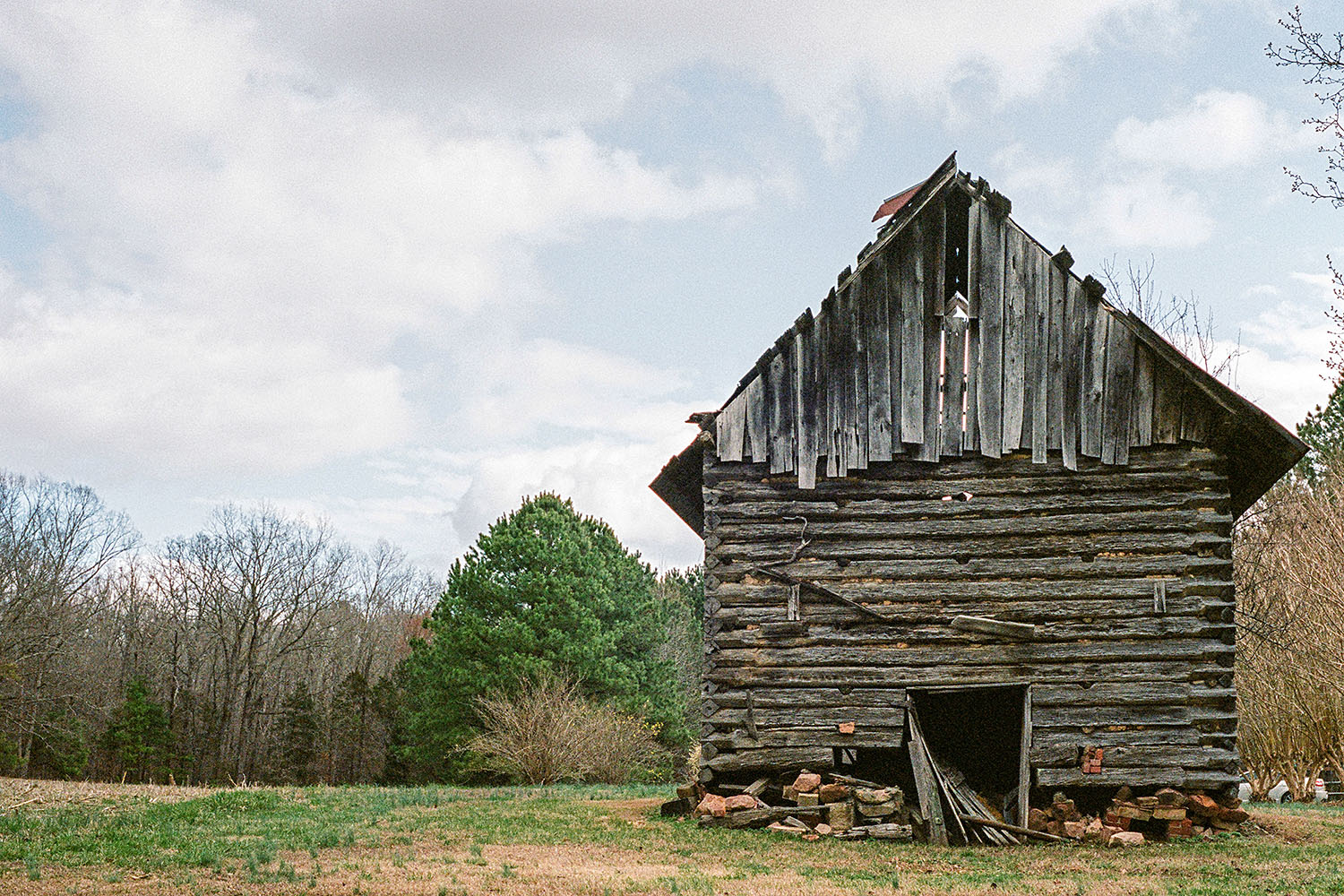
|
Old barn on Whippoorwill Lane |
50mm, ISO 400, 1/1000, ƒ/11 |
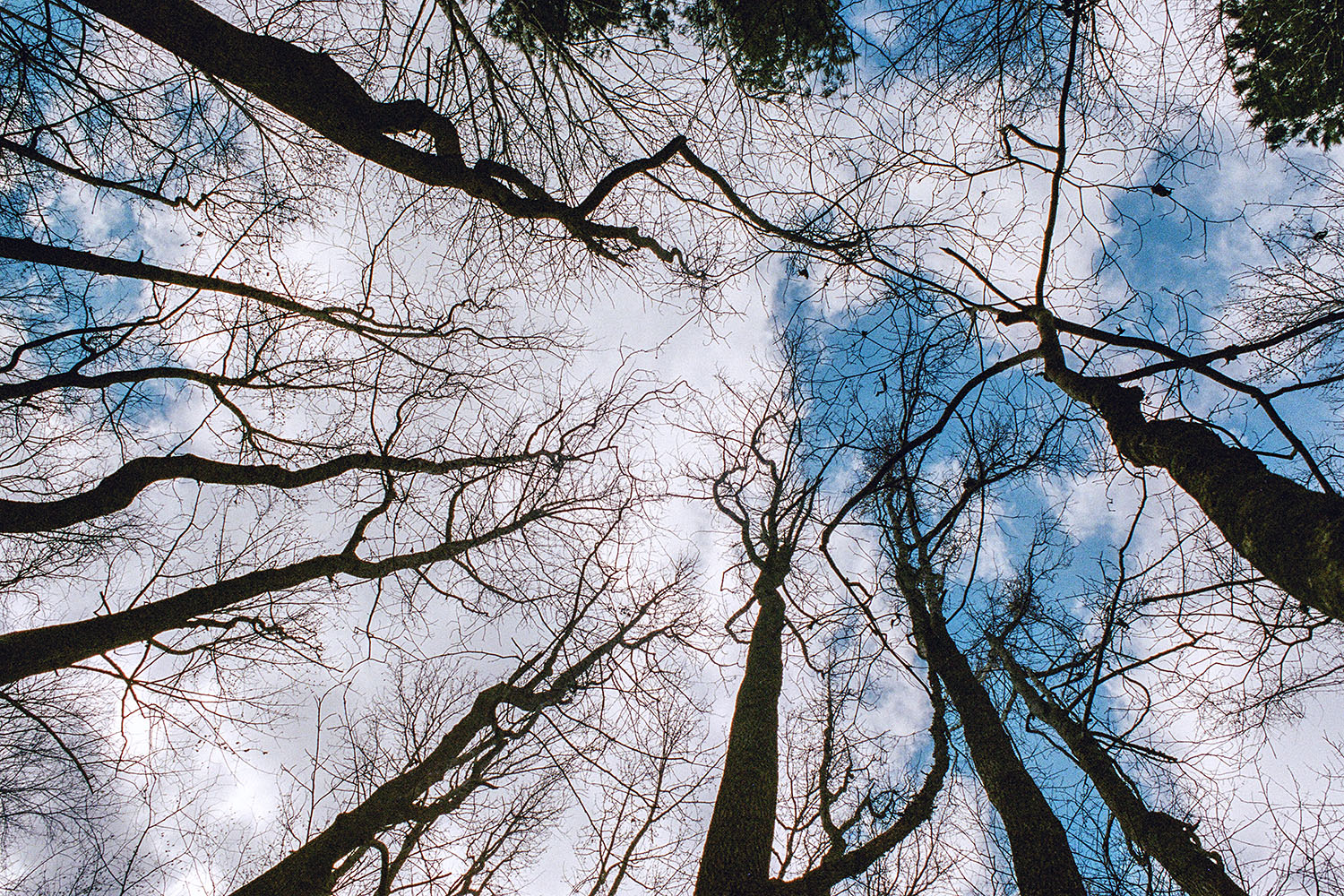
|
Looking up into the trees at Southern Community Park |
28mm, ISO 400, 1/1000, ƒ/22 |
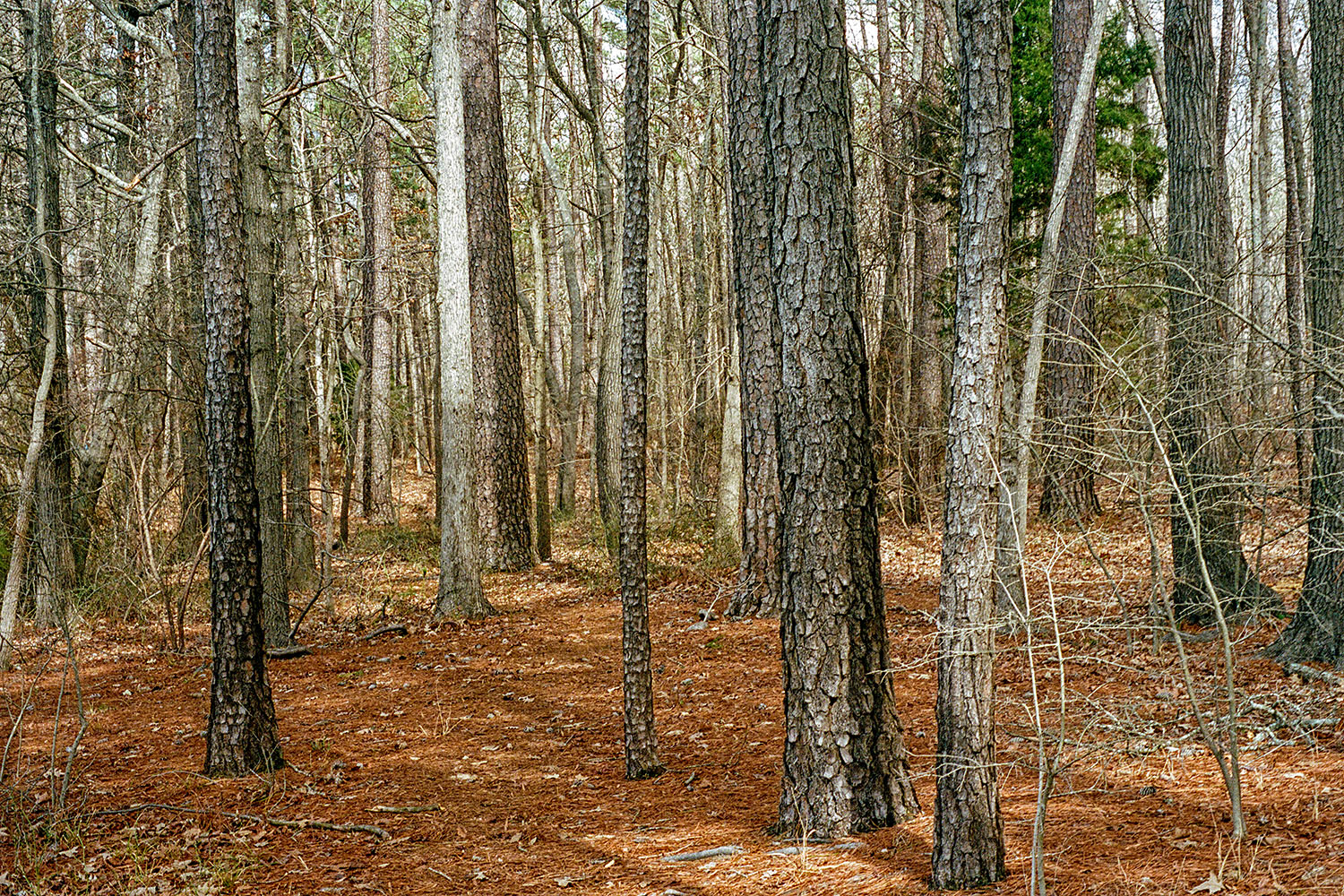
|
Woods by Jordan Lake |
50mm, ISO 400, 1/125, ƒ/16 |
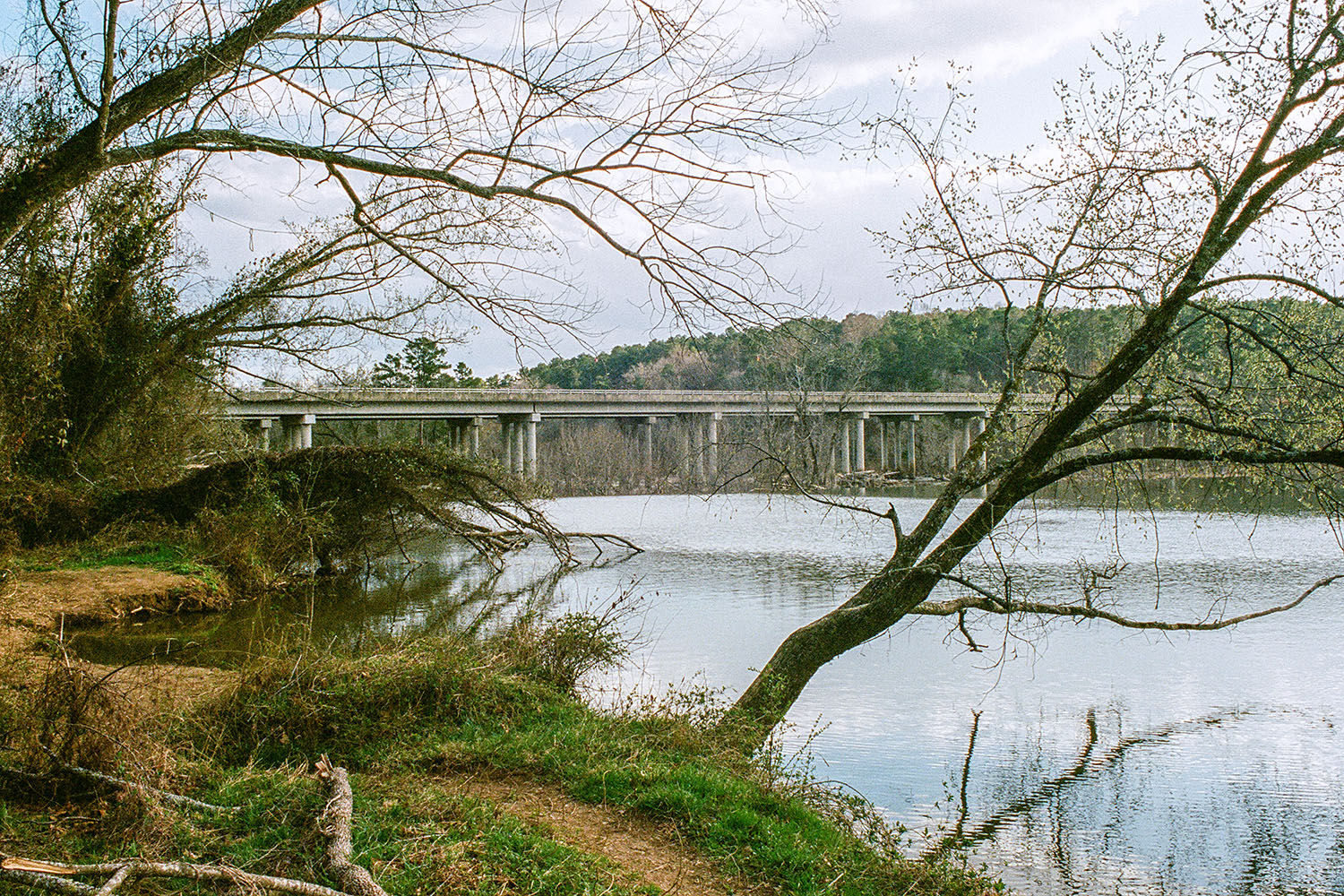
|
The Haw River |
28mm, ISO 400, 1/125, ƒ/22 |

|
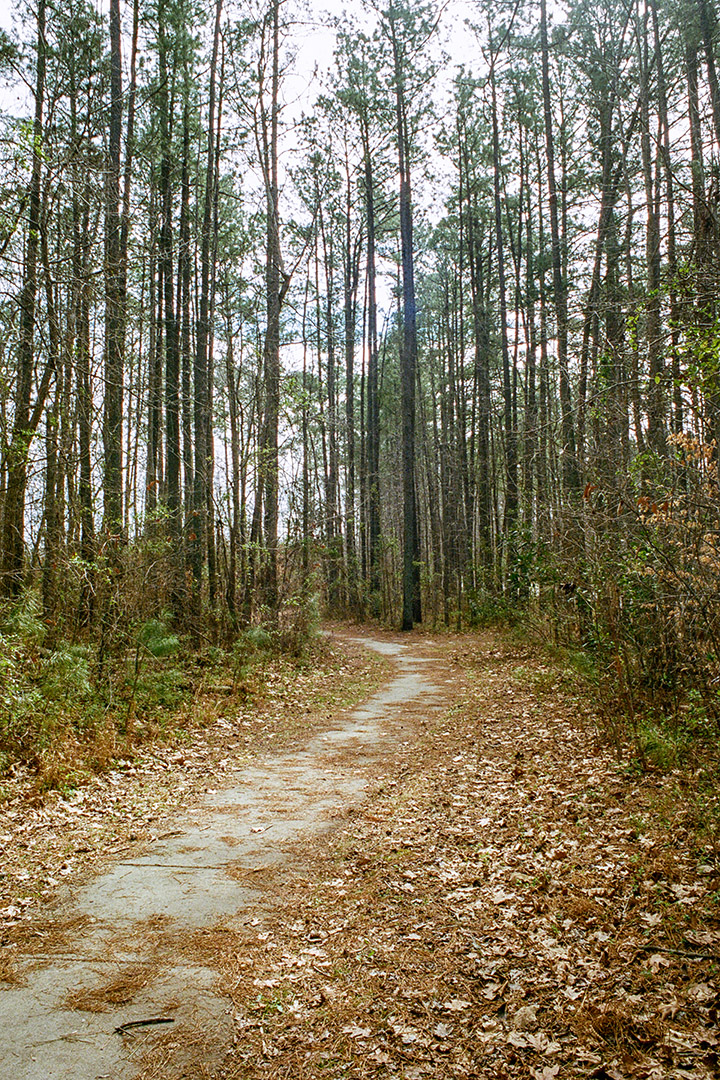
|
Along the Haw river (28mm, ISO 400, 1/125, ƒ/11) |
Neighborhood Trail (28mm, ISO 400, 1/125, ƒ/13) |
One of the things you cannot do with film is change the ISO in the middle of the roll: once the film is in the camera, you're pretty much stuck with it. Like most cameras of its day, the Minolta SR-T-303 cannot shoot faster than a thousandth of a second, and the aperture on my lenses only closes down to ƒ/22 (the one on the 50mm lens to ƒ/16). A neutral density filter would therefore be useful when shooting Portra 400 film outdoors. This is an area where one is truly spoiled by today's digital cameras.
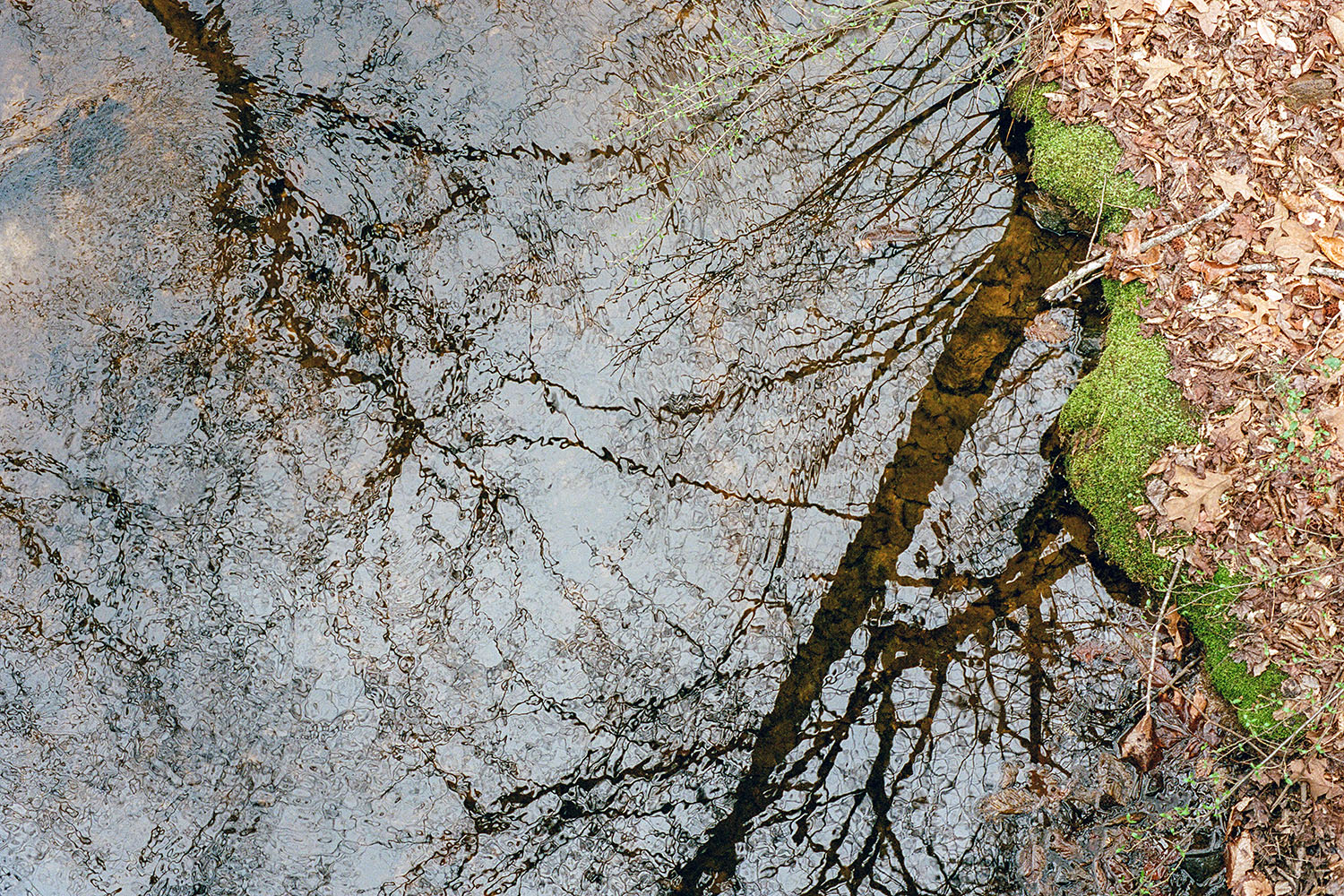
|
Neighborhood walk reflections |
50mm, ISO 400, 1/125, ƒ/8 |
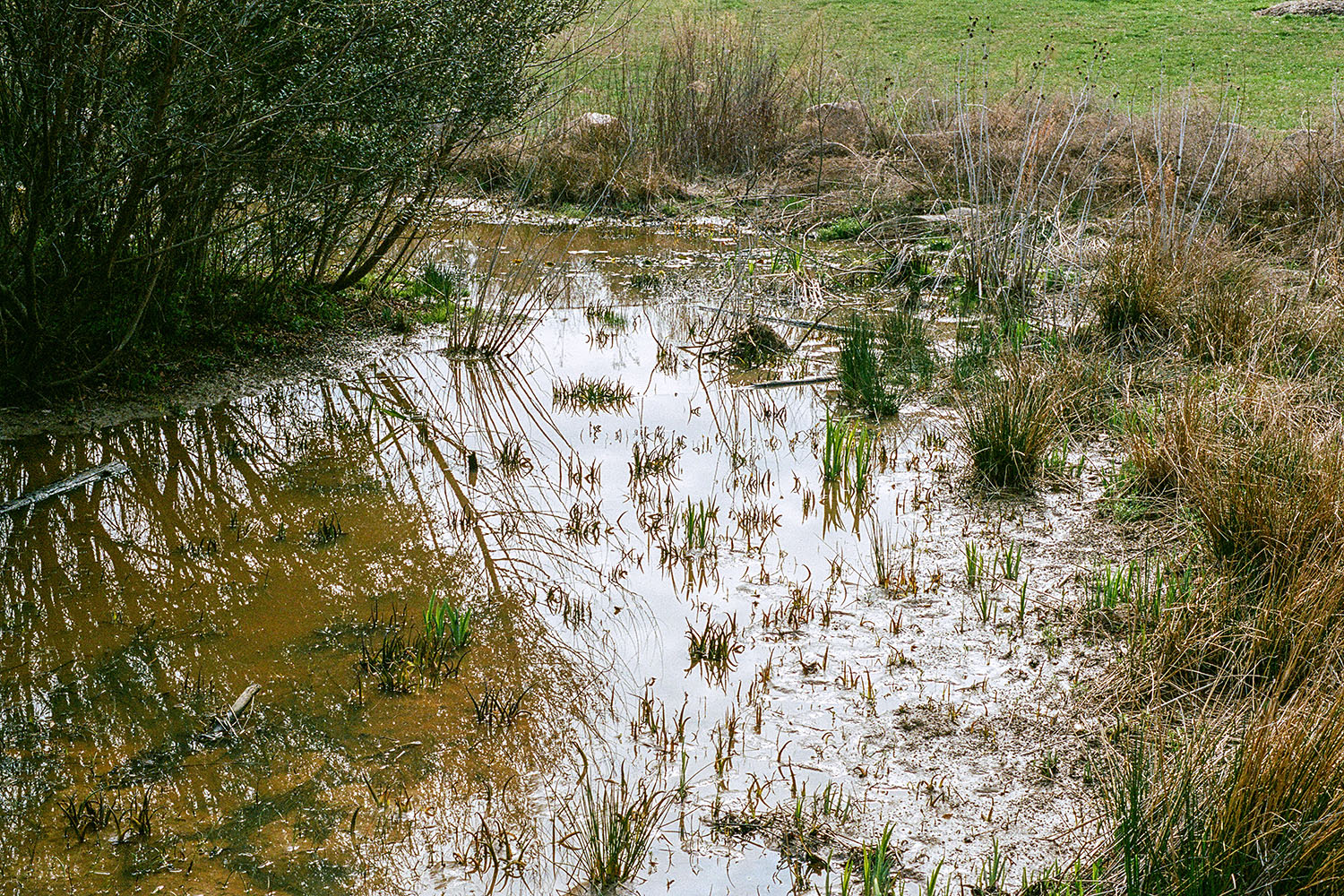
|
Biotope in Southern Community Park |
50mm, ISO 400, 1/1000, ƒ/11 |
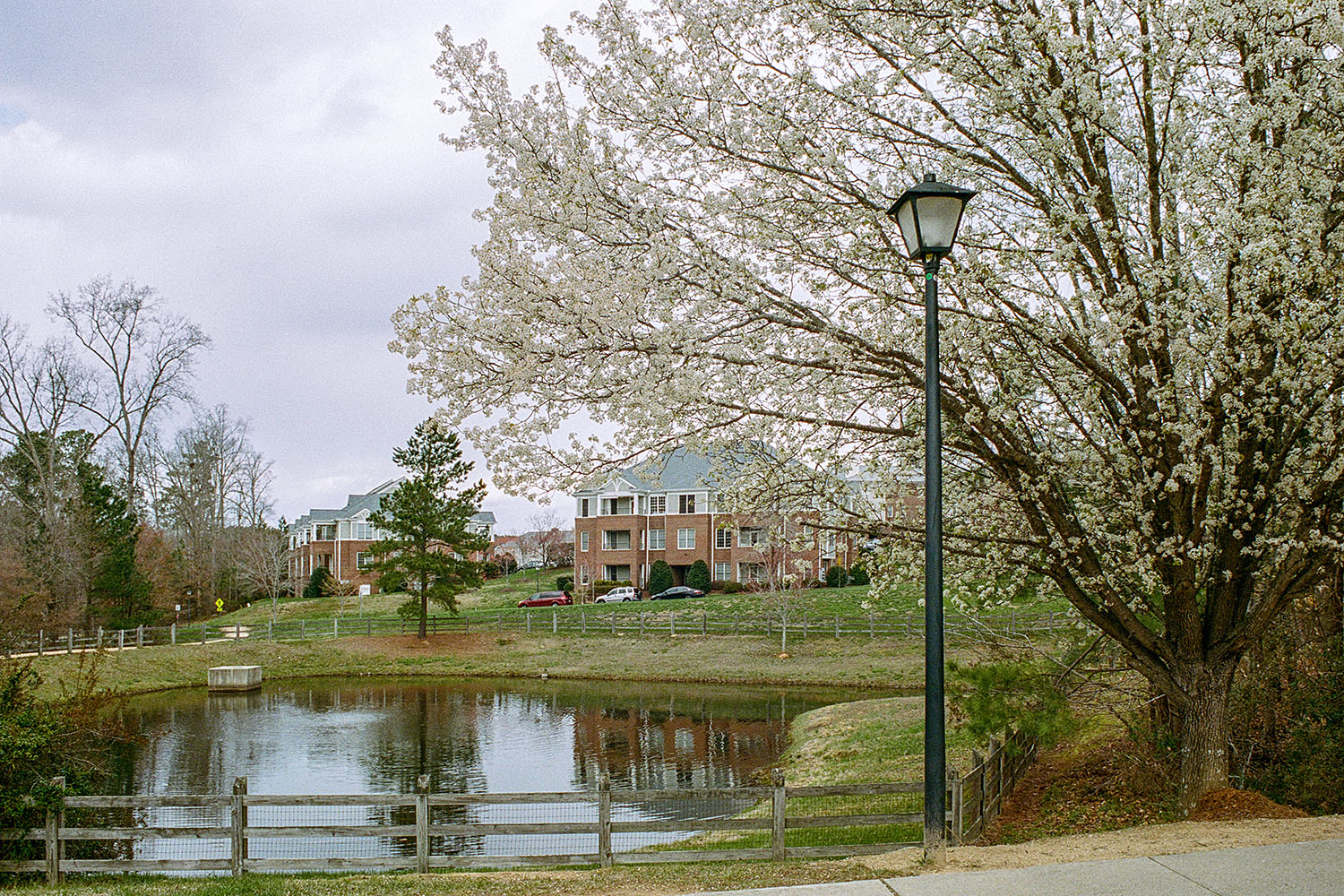
|
Pond in front of Mary Scroggs Elementary School |
28mm, ISO 400, 1/250 ƒ/16 |
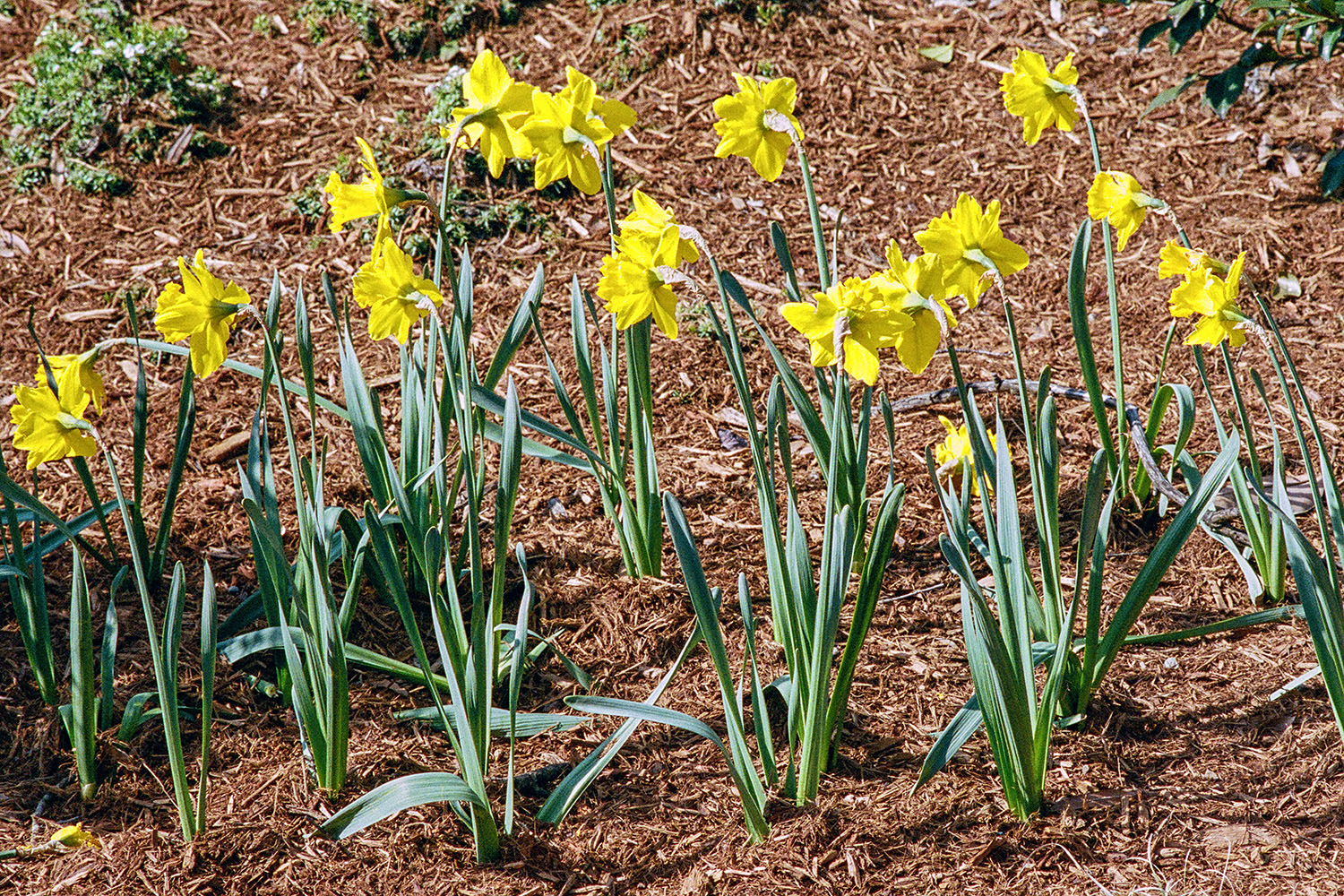
|
Daffodils on NC State Campus |
135mm, ISO 400, 1/500 ƒ/16 |
As you have undoubtedly noticed by now, there is no common theme to these images; they only serve to test camera and lenses and to see how it feels to use film after so many years. All the photos on this page were either shot during walks in the neighborhood or in locations not further than forty-five minutes from our place by car.

|
Wolf Plaza on NC State Campus |
50mm, ISO 400, 1/125 ƒ/16 |

|
Farm off Mount Carmel Church Road |
135mm, ISO 400, 1/1000 ƒ/19 |

|
Trees by pond at Seagrove Park in Apex |
135mm, ISO 400, 1/500 ƒ/11 |
So, what do I do after I finish a roll of film? I let a lab handle it, and in my case, that lab is The Darkroom in California. I send them the roll in a postage-paid USPS mailer with a tracking number. They develop the film and immediately scan the negatives at a resolution of 6774x4482 pixels. When this process is done, I am notified by email and can download the scans to my computer as positive digital files that I can then work with using any of my photo processing applications. Two or three days later, the cut and sleeved negatives are in my physical mailbox along with another prepaid mailer for my next roll. What could be easier?

|
Martha's Chapel on Route 751 |
135mm, ISO 400, 1/500 ƒ/13 |
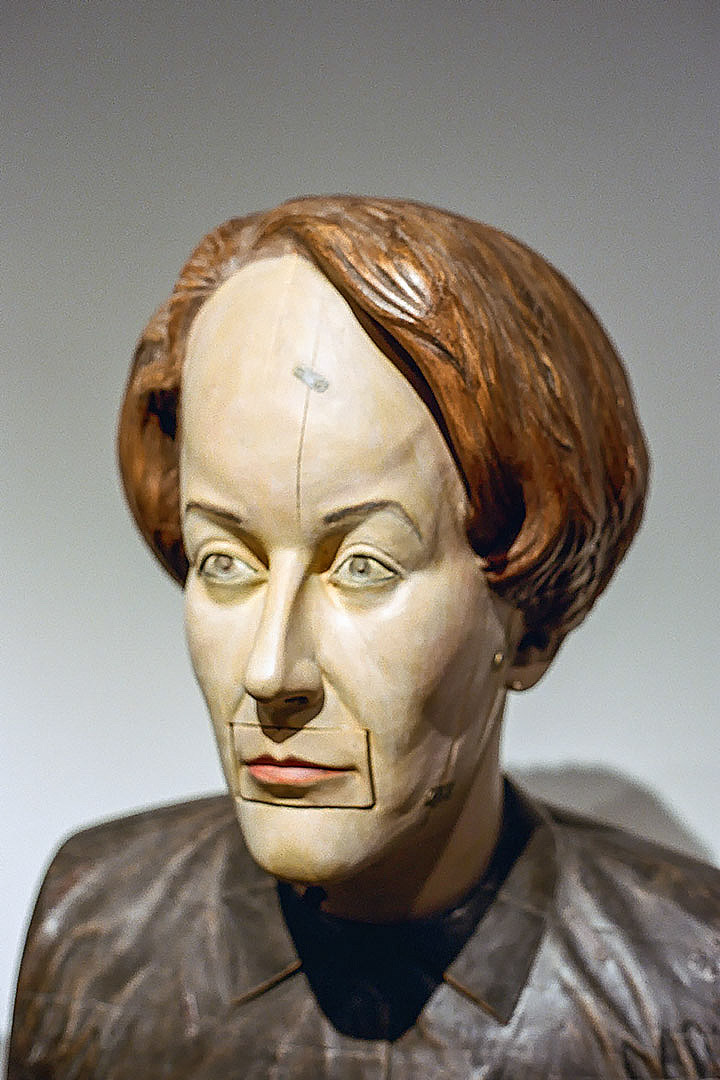
|
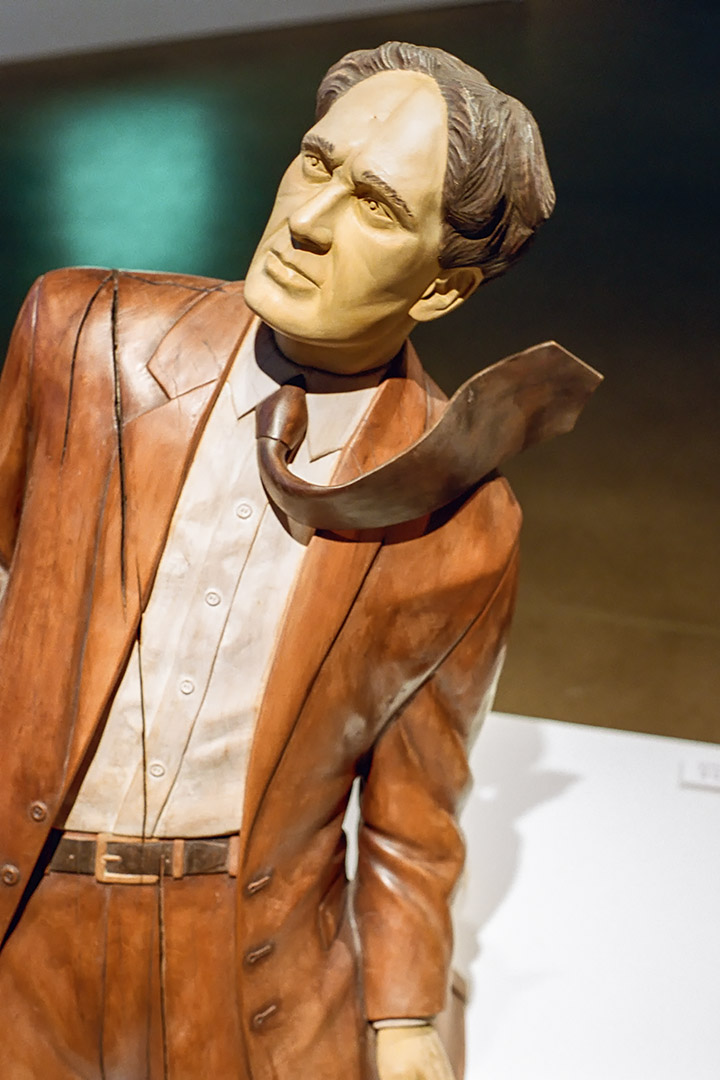
|
Business as Usual (50mm, ISO 400, 1/60, ƒ/2.8) |
Business as Usual (50mm, ISO 400, 1/60, ƒ/4) |
These last two photos, taken at the "Business as Usual" exhibit at the Gregg Museum of Art & Design on NC State Campus show that I clearly struggle with focusing in low light, even with stationary subjects. It will take me more than a few rolls to get back to my old proficiency in this department, but I suppose that this is perfectly normal. So, what were the things that struck me during this foray into film after decades of shooting with digital cameras? There are a few points I can make:
What, then, is the outcome of this experiment? For me, it is definitely positive, though I need far more practice to get anywhere near the deftness I used to have with this equipment. Obviously, my intention is not, and never has been, to stop shooting with digital cameras. However, from time to time, I will gladly go out and shoot some film. Call it nostalgia, if you wish—to me, it's just pure pleasure.
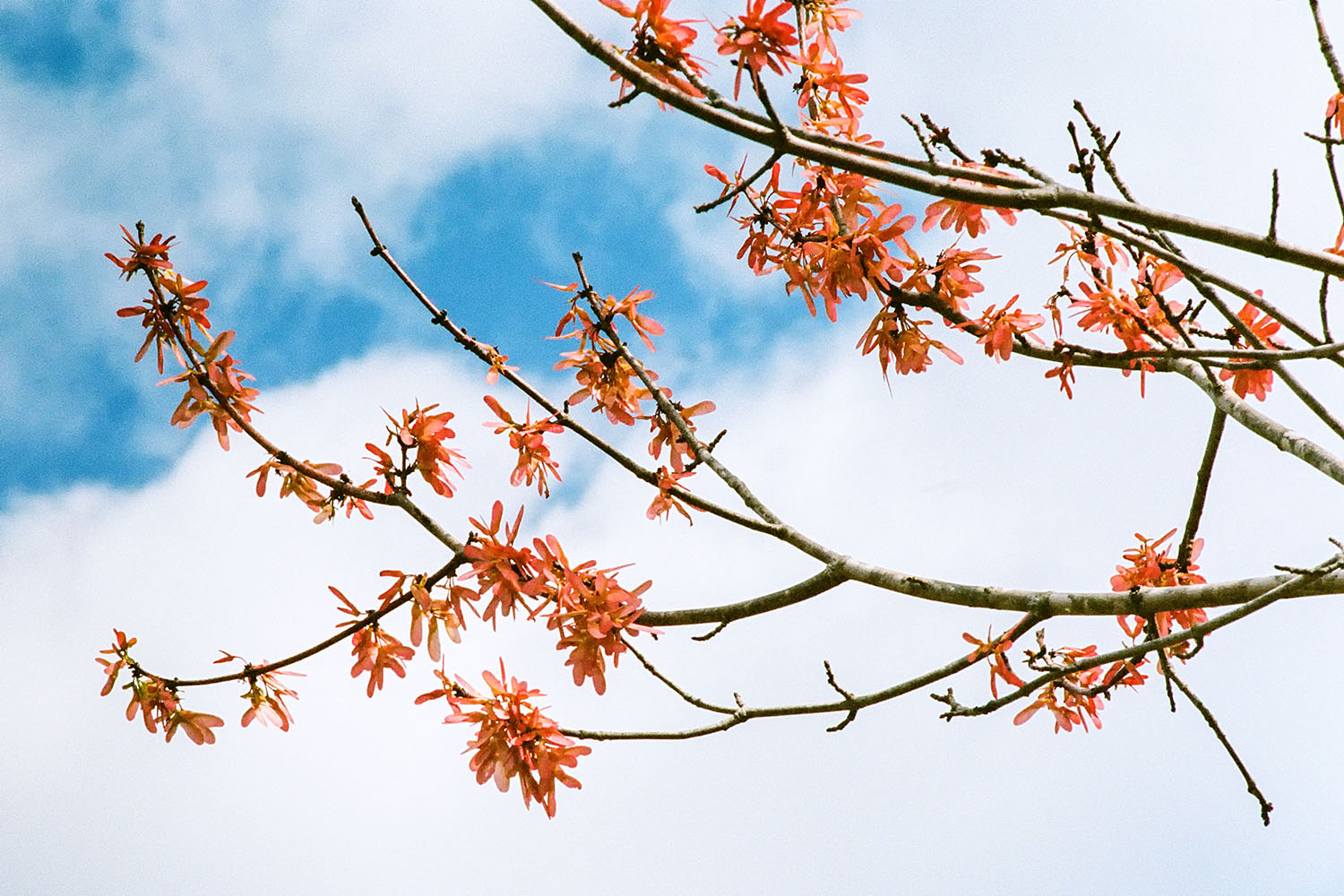
|
Signs of spring |
135mm, ISO 400, 1/1000 ƒ/16 |
The photos on this page were taken in February and March 2018 in North Carolina.
They, and quite a few more, may also be viewed in a Web gallery or
slide show.
Home | Site Info | Family | The Area | Trips | France | Work | Rants | Photography | Odds & Ends
This page was last modified on April 1, 2018
Send feedback about this page to feedback@kiechle.com
https://www.kiechle.com/photography/portra400/index.htm
(optimized for Retina display)
All contents © 1999-2025 The Kiechles